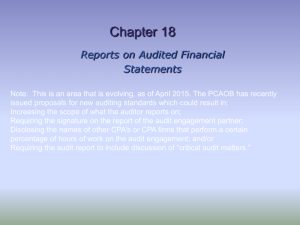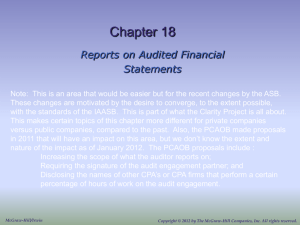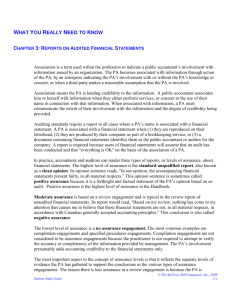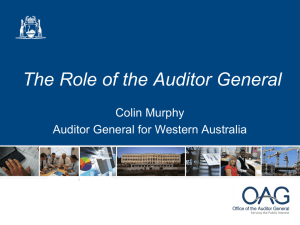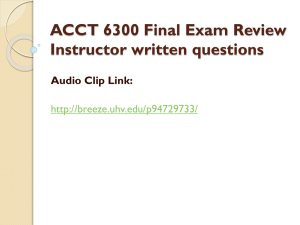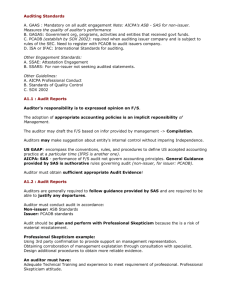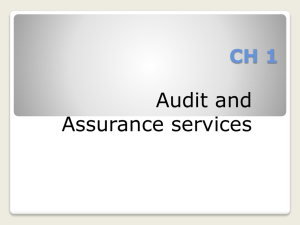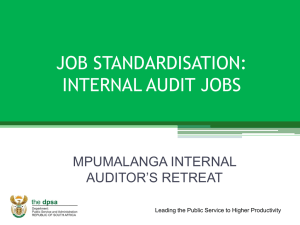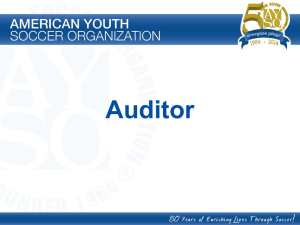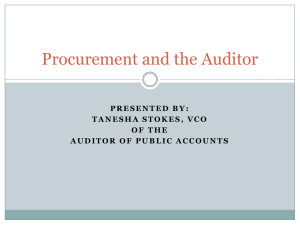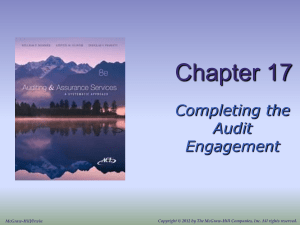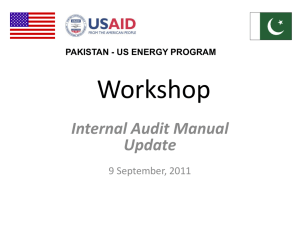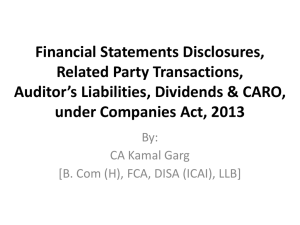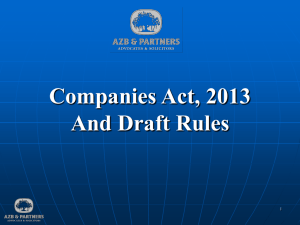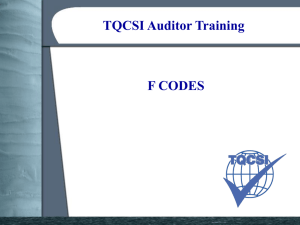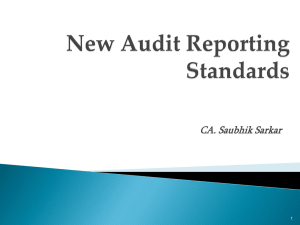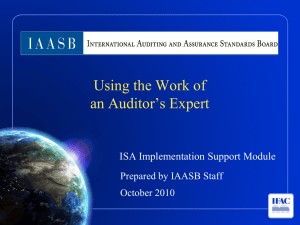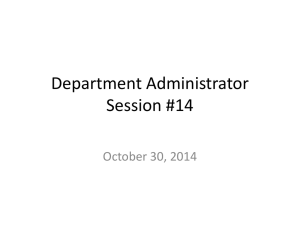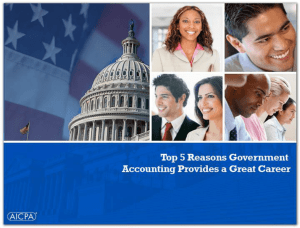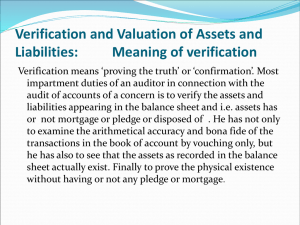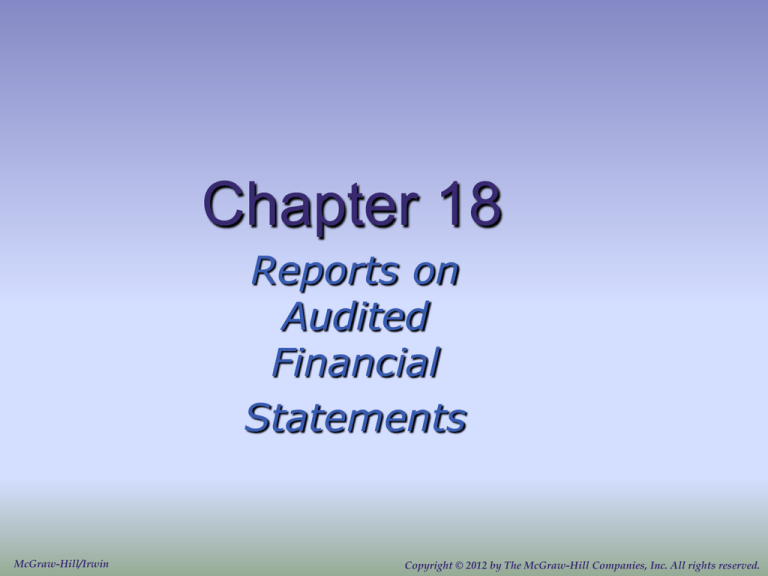
Chapter 18
Reports on
Audited
Financial
Statements
McGraw-Hill/Irwin
Copyright © 2012 by The McGraw-Hill Companies, Inc. All rights reserved.
LO# 1
Reporting on the Financial Statement
Audit: The Standard Unqualified Report
Eight Elements
1. Report title
2. Addressee
3. Introductory paragraph
4. Scope paragraph
5. Opinion paragraph
6. Explanatory paragraph
referring to the audit of
ICFR
The standard unqualified
report is issued when the
auditor has gathered sufficient
evidence, the audit has been
performed in accordance with
PCAOB standards, and the
financial statements conform
to GAAP.
7. Name of auditor
8. Audit report date
18-2
LO# 1
Standard Unqualified Audit Report
(PCAOB)
18-3
LO# 1
Reporting on the Financial Statement
Audit: The Standard Unmodified Report
Nine Elements
1. Report title
2. Addressee
3. Introductory paragraph
4. Management’s
responsibility
5. Auditor’s responsibility
The standard unmodified
report is issued when the
auditor has gathered sufficient
evidence, the audit has been
performed in accordance with
GAAS, and the financial
statements conform to GAAP.
6. Scope paragraph
7. Opinion paragraph
8. Name of Auditor
9. Audit report date
18-4
LO# 1
Standard Unmodified Audit Report
(ASB)
18-5
LO# 2
Adjustments to the Standard
Unqualified/Unmodified Financial
Statement Audit Report
Explanatory Paragraph:
Reference to report on
audit of ICFR
Explanatory Paragraph:
Going concern
Modified Wording:
Opinion based in part on
the report of another
auditor
Explanatory Paragraph:
Lack of consistency
Explanatory Paragraph:
Additional emphasis
18-6
LO# 2
Reference to Other Auditors
18-7
LO# 2
Going Concern
18-8
LO# 2
Lack of Consistency
Changes Affecting Consistency
Change in
accounting
principle
Correction
of an error
in principle
Change in
reporting
entity
Changes Not Affecting Consistency
Change in
accounting
estimate
Correction of
anerror that does
not involve an
accounting
principle
Change
inclassification
and
reclassification
Change expected
to have a material
future effect
18-9
LO# 2
Additional Emphasis
Under certain circumstances (e.g. significant relatedparty transactions, subsequent event) an auditor may
want to emphasize a specific matter regarding the
financial statements even though he or she intends to
express an unqualified/unmodified opinion.
This information
should be presented
in an explanatory
paragraph.
18-10
Conditions for Departure from
Unqualified/Unmodified Report
LO# 3
Scope
Limitation
Departure
from GAAP
Lack of Auditor
Independence
18-11
LO# 4
Departures from an
Unqualified/Unmodified Financial
Statement Audit Report
Qualified
“except for”
Disclaimer
Adverse
18-12
LO# 5
Effect of Materiality
18-13
LO# 5
Discussion of Conditions Requiring
Other Types of Financial Statement
Audit Reports
Scope
Limitation
Results from an inability to obtain
sufficient competent evidence
about some component of the
financial statements.
Not in
Conformity
with GAAP
Results when financial statements
are materially affected by an
unacceptable departure from GAAP.
Auditor Not
Independent
Results when auditor has some
form of prohibited relationship with
the client (see Ch. 19).
18-14
LO# 5
Discussion of Conditions Requiring
Other Types of Financial Statement
Audit Reports
Scope
Limitation
Issue a qualified opinion or a
disclaimer.
Not in
Conformity
with GAAP
Issue a qualified opinion or
adverse opinion.
Auditor Not
Independent
Issue a disclaimer.
18-15
LO# 5
Scope Limitation: Disclaimer
18-16
LO# 5
Scope Limitation: Qualified
18-17
LO# 5
Not GAAP: Qualified
18-18
LO# 5
Not GAAP: Adverse
18-19
LO# 6
Special Reporting Issues
Different reports on
comparative
financial statements
Change in report on
prior-period
financial statements
Report by a
predecessor
auditor
18-20
LO# 6
Different Reports on
Comparative Financial Statements
Prior Years
Current Year
Issued Qualified Opinion
or Disclaimer.
Issues Unqualified
Opinion.
18-21
LO# 6
Restated Prior-Period
18-22
LO# 6
Report by a Predecessor Auditor
The predecessor auditor should
do the followingbeforereissuing
a report on prior-year financial
statements published for
comparative purposes:
1. Read the financial statements of the
current period.
2. Compare the prior-period financial
statements reported on with the
current-year financial statements.
3. Obtain a letter of representation from
the current-year or successor auditor.
18-23
Other Information in
Documents Containing Audited
Financial Statements
LO# 7
The auditor has no responsibility beyond the financial
information contained in the report, and he or she has
no obligation to perform any audit procedures to
corroborate the other information. However, the auditor
is required to read the other information and consider
whether it is consistent with the information contained
in the audited financial statements.
Annual
Reports
Registration
Statements
18-24
LO# 7
Special Reports
Financial statements
prepared on a
comprehensive basis
of accounting other
than GAAP
Specified elements,
accounts, or items of a
financial statement
Compliance with
aspects of contractual
agreements or
regulatory requirements
18-25
LO# 8
Financial Statements
Prepared According to a Special
Purpose Framework
Regulatory Basis
Tax Basis
Cash (or Modified Cash)
Basis
Contractual Basis
18-26
LO# 9
Specific Elements, Accounts, or
Items of a Financial Statement
In some situations an auditor may be engaged to
audit only part (or specified elements, accounts,
or items) of the financial statements.
Rather than auditing specified elements,
accounts, or items, an auditor may be engaged to
apply only agreed-upon procedures.
18-27
LO# 10
Compliance Reports Related to
Audited Financial Statements
The auditor provides negative assurance as to compliance
with the provisions of contractual agreements or regulatory
requirements.
18-28

